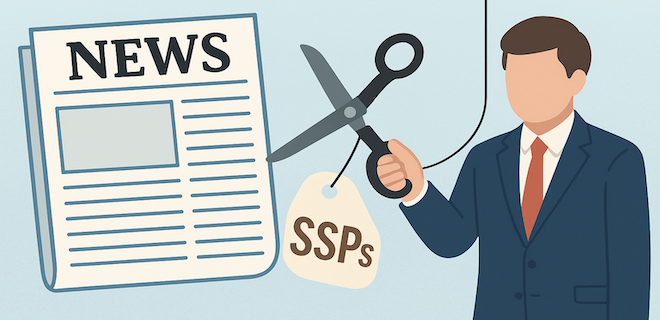
As digital ad spend climbs, Supply-side Platforms (SSPs) face a reckoning—publishers are ditching empty promises for real performance, demanding transparency, smarter tech, and true partnership in a cutthroat, AI-driven market.
Supply-side platforms are experiencing a reckoning. After years of coasting on the industry’s growth wave, they’re waking up to a brutal reality: Publishers have stopped buying their promises and started demanding proof.
The numbers tell the story. Digital advertising hit a record $259 billion in revenue in 2024—a 15% year-over-year increase. But the spoils aren’t being distributed equally. Publishers are consolidating their tech stacks, cutting out the middlemen who can’t justify their existence and demanding partners who solve actual problems rather than just moving money around.
The Great Awakening
Remember when SSPs could survive by simply claiming they had more demand sources? Those days are over. Publishers have figured out that 10 mediocre demand partners often perform worse than three excellent ones.
They’re asking uncomfortable questions: Why are my fill rates still terrible? Why does my inventory sell for pennies on some platforms and dollars on others? Why can’t I get a straight answer about where my ads are running?
The math is unforgiving. Worldwide programmatic display ad spending will grow 14.6% in 2025, but publishers are increasingly selective about who gets to handle their inventory. They’re done with platforms that optimize for their metrics rather than publisher outcomes.
Beyond the Yield Myth
One little dirty secret of programmatic advertising is that many SSPs have been optimizing for the wrong metrics. They’ve focused on maximizing their revenue per impression rather than maximizing publisher value. This has led to a race to the bottom where platforms compete on quantity rather than quality.
Smart publishers are catching on. They’re looking beyond CPMs. They care about total revenue, user experience and brand safety. A high CPM is worthless if it ruins their site or damages their reputation.
The smart SSPs get this. They build systems that juggle multiple factors at once. Floor prices adjust based on who’s visiting and what inventory is available. They reject crappy demand sources even when it costs them money.
The Intelligence Revolution
Here’s where things get interesting. Only 30% of agencies, brands and publishers have fully integrated AI across the media campaign life cycle. But the SSPs that have cracked this code are pulling ahead dramatically.
The winners are building comprehensive data platforms that analyze billions of transactions to identify patterns humans can’t see. They’re predicting which inventory will be in demand before publishers even know they have it. They’re identifying fraudulent traffic before it impacts campaign performance. They’re optimizing not just for immediate yield but also for long-term publisher sustainability.
This isn’t about throwing machine learning at every problem; it’s about using intelligence strategically to solve specific publisher pain points.
It’s an Arms Race
The tech requirements are brutal now. Publishers want lightning-fast responses: under 100 milliseconds. They want real-time reports that update in real time. They want header bidding that doesn’t break their sites. And they want everything to work together seamlessly.
The SSPs that are winning have invested heavily in edge computing, reducing latency and improving user experience. They’ve built APIs that work. They’ve created dashboard interfaces that provide actionable insights rather than just pretty charts.
But technology alone isn’t enough. The real differentiator is how that technology is deployed to solve publisher problems.
The Push for Real Partnerships
Publishers are done with transactional relationships. They want partners who understand their business. They look for deep market insights, audience help and revenue advice.
This new paradigm is forcing SSPs to invest in human resources alongside their sophisticated technology. They are hiring qualified account managers, industry analysts and business development specialists. They provide consulting services to help publishers optimize their entire monetization strategy.
The platforms that have embraced this shift are seeing publishers stick with them even when competitors offer higher short-term yields. They’ve figured out that retention is more valuable than acquisition in the current market.
Quality Control Revolution
Fraud has become the industry’s biggest problem and biggest opportunity. Publishers are tired of losing money to invalid traffic and brand safety incidents. They want SSPs that take quality control seriously, not just as a compliance exercise.
The leading platforms are implementing predictive fraud detection systems. One example: Platforms like Pixalate filter traffic from known data centers and proxy servers to ensure clean inventory. These platforms maintain detailed demand source profiles that track not just bid behavior but also user engagement metrics and creative quality scores. They also provide transparency reports that help publishers make better decisions.
The Birth of a New Scorecard
Publishers are changing how they evaluate SSPs. They’re looking beyond CPMs to consider total value delivered. They’re measuring platforms on user experience impact, brand safety incidents and long-term revenue sustainability. They’re demanding transparency not just about what happened but why it happened.
The commodity phase of SSP development is over. Publishers have too many options and too much sophistication to settle for generic solutions. Some will focus on premium publishers who need sophisticated yield management. Others will serve long-tail sites that need simple, effective solutions. Some will specialize in specific formats like CTV or audio. Others will build comprehensive platforms that handle multiple channels.
Publishers are voting with their wallets, and the results are clear: Value creators are winning, commodity players are losing, and the gap is widening every quarter. The question isn’t whether SSPs will evolve; it’s which ones will lead the evolution and which ones will be left behind.